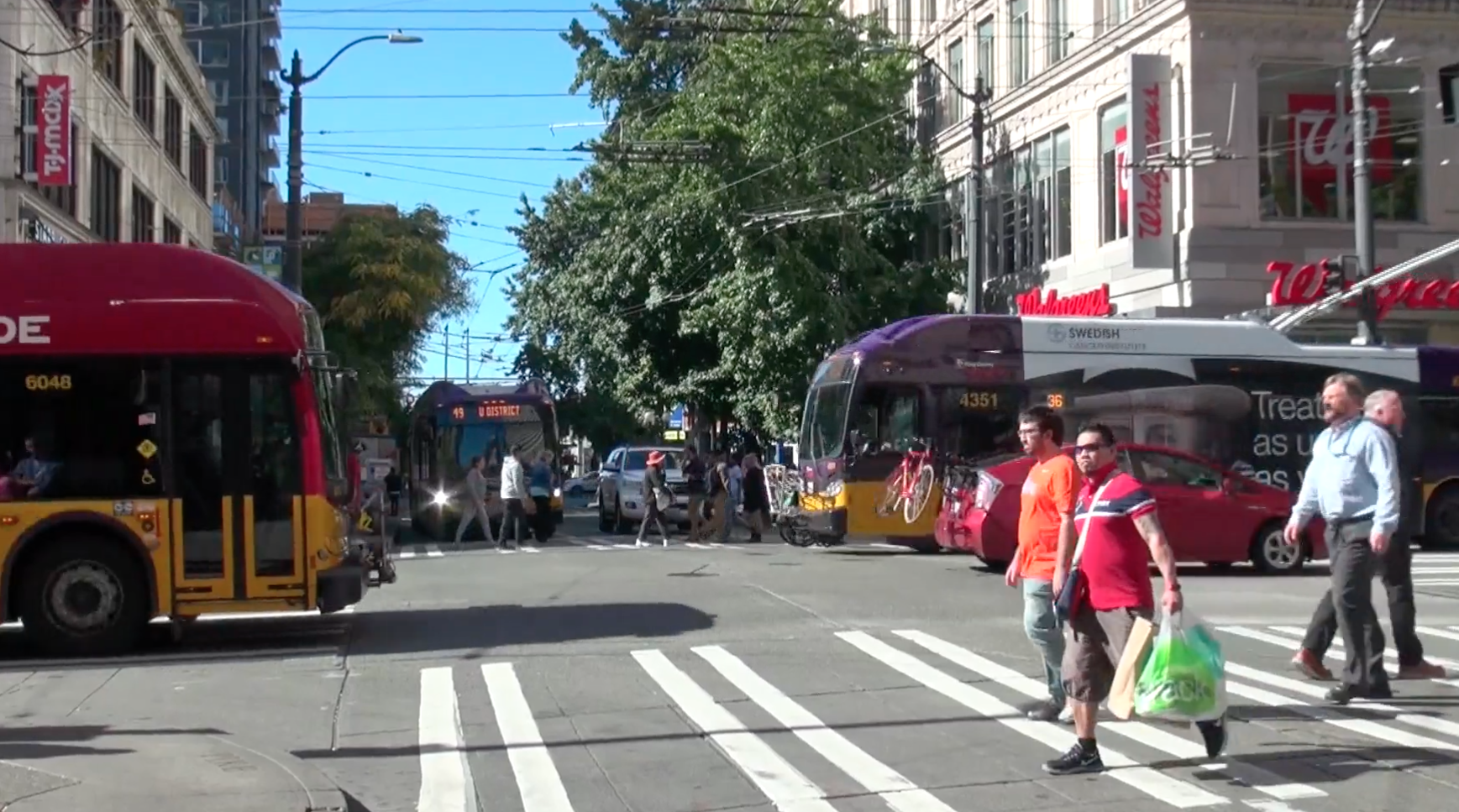
“
“The City of Seattle can’t handle any more cars than we currently have. Our mode split needs to go from 30% single occupancy vehicle to 25%, and the lions share of that is going to be carried on the bus.”
Seattle, one of the fastest growing cities in America, is making bold investments to ensure the majority of its residents live within walking distance of frequent transit. The city’s efforts are paying off – both bus and rail ridership have seen huge gains in recent years, and 70% of trips to downtown Seattle are now made by people outside of private vehicles. And as a measure of confidence, Seattle voters approved the $900 million Move Seattle transportation levy in 2015 and followed up by supporting the regional Sound Transit 3, a $50 billion rail expansion in 2016.
 On the Brink: Will WMATA’s Progress Be Erased by 2024?
On the Brink: Will WMATA’s Progress Be Erased by 2024?
The experience of being a WMATA rider has substantially improved over the last 18 months, thanks to changes the agency has made like adding off-peak service and simplifying fares. Things are about to get even better with the launch of all-door boarding later this fall, overnight bus service on some lines starting in December, and an ambitious plan to redesign the Metrobus network. But all of this could go away by July 1, 2024.
Read More A Bus Agenda for New York City Mayor Eric Adams
A Bus Agenda for New York City Mayor Eric Adams
To create the “state-of-the-art bus transit system” of his campaign platform, Mayor Adams will have to both expand the quantity and improve the quality of bus lanes. We recommend these strategies to get it done.
Read More